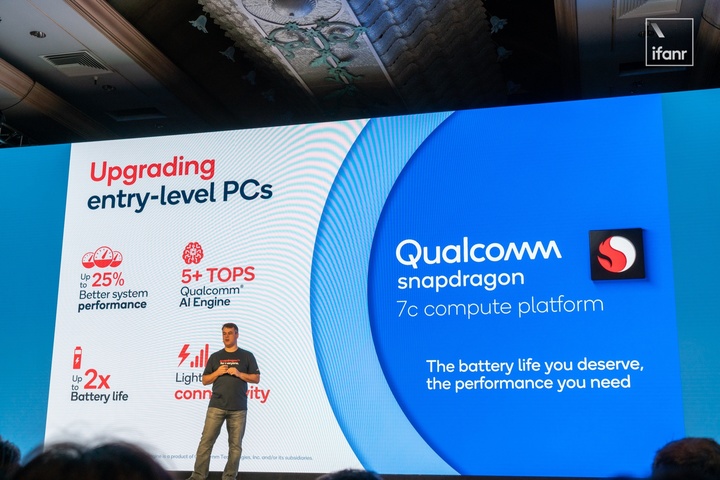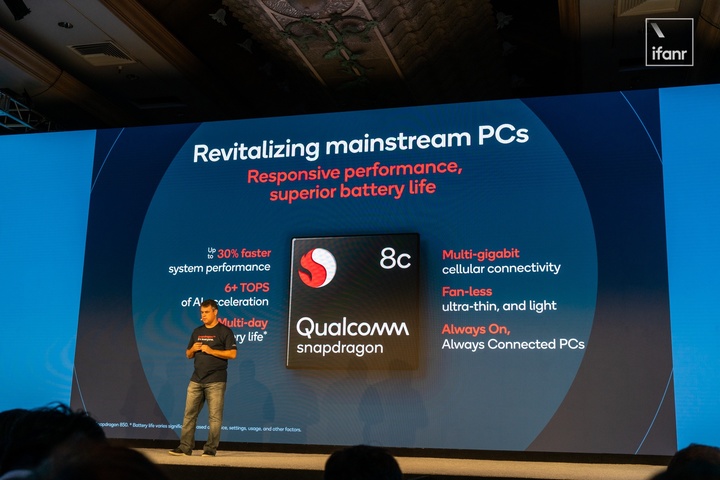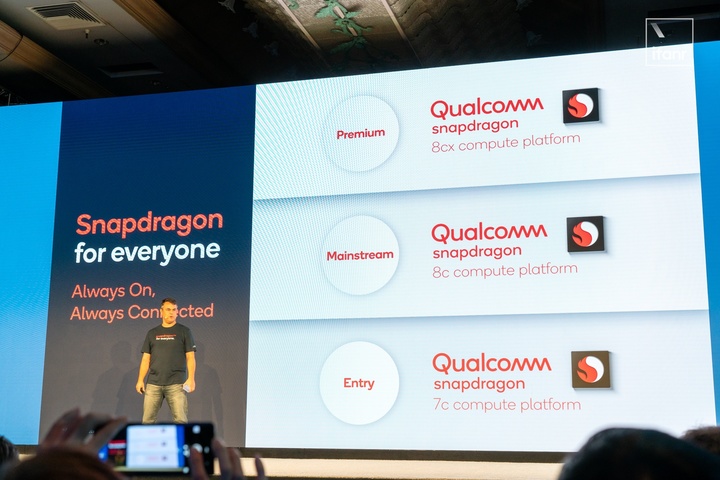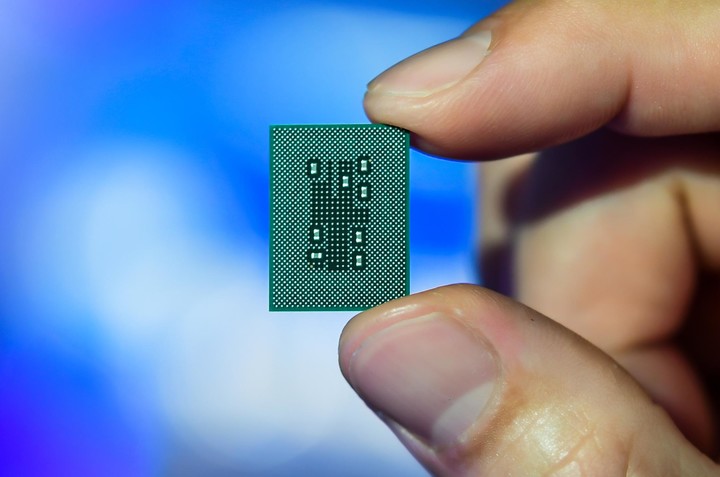Qualcomm’s chip business is no longer confined to the field of mobile devices, but has further penetrated the PC market. Compared to the X86 chip that emphasizes performance, the ARM series chips represented by Qualcomm Snapdragon want to highlight their advantages, namely longer battery life, fanless design, and all-weather cellular network connection.
On the third day of the Snapdragon Technology Summit, Qualcomm released two new PC chips-Snapdragon 8c and 7c. They are positioned as an extension of the existing Snapdragon 8cx platform, targeting low-end and mid-range PCs. Equipment, so that Qualcomm-based PC equipment can cover more price segments.

First, let’s talk about the Snapdragon 7c platform, which is mainly for entry-level PC devices. According to Qualcomm’s official website, Parameters , it uses 8nm process, integrates Snapdragon 8 core Kryo 468 CPU, Adreno 618 GPU and X15 LTE baseband, built-in AI engine can achieve 5TOPS computing performance per second, support the latest Windows 10 AI accelerates the experience.
At the same time, 7c will also support LPDDR4Memory and UFS3.0 storage, capable of running displays with a resolution of up to 2560 × 1440 at a 60Hz refresh rate, and also supports Wi-Fi 6 and Bluetooth 5.1 connectivity.

And Qualcomm said that the performance of the Snapdragon 7c is 20% faster than the Snapdragon 850 released last year, the system performance will be 25% faster than the competition, and the battery life can be twice that of the competition, but this ” “Competitive products” is who, Qualcomm did not say.

As for the Snapdragon 8c, like the 8cx, it also uses a 7nm process and integrates a stronger Kryo 490 CPU and Adreno 675 GPU. The performance is 30% higher than the existing Snapdragon 850. AI computing performance can reach every 6TOPS per second, it also integrates the X24 LTE baseband. Manufacturers can also choose the X55 baseband that supports 5G.
In addition, 8c further supports NVMe SSD storage on the basis of 7c, which can drive a built-in 4K screen and two 4K external displays, More detailed parameters can browse the data of Qualcomm’s official website.
As for the existing Snapdragon 8cx, Qualcomm hopes to position it as an enterprise-class computing platform. It is expected that in 2020, Lenovo will release a notebook equipped with the Snapdragon 8cx chip and supporting 5G.

At the summit, Alex Katouzian, Qualcomm ’s vice president and general manager of mobile business, said that Qualcomm has made smartphones “a PC in your pocket”; but at the same time, Qualcomm I also want to give the PC platform a slim design, 24/7 online, and long battery life.
Considering that Intel and AMD will now pay more attention to the development of mid-to-high-end PC chips, and less involvement in the low-priced field. Qualcomm ’s 7c / 8 c chips this time, naturally hope to fill this gap. For example, the education market for students.

At the summit, Microsoft also provided software and service support for the new Snapdragon PC chip for the Qualcomm platform. Previously, Microsoft’s Surface Pro X was equipped with a processor called SQ1, which is the result of custom development of Microsoft and Qualcomm based on the Snapdragon 8cx chip. Qualcomm claims that it willMany improvements over the non-customized 8cx chip,
But SQ1 has also caused a lot of controversy on Surface Pro X. like The Foreign media such as Verge pointed out that in some multi-tasking scenarios and heavy applications, ARM notebooks such as Surface Pro X are still difficult to compare with devices equipped with X86 series chips.
At the same time, the compatibility of Snapdragon-based notebooks with some X86 applications is not perfect, which has led PC manufacturers to be afraid to use Snapdragon-based PCs as their flagship products, which is also a problem that Qualcomm needs to solve.

Qualcomm also said in an interview at the scene that the current Snapdragon chip is better compatible with 32-bit X86 programs, but it is still lacking for 64-bit applications. At present, Qualcomm has promoted the participation of some application vendors in this area. Work, for example, Adobe has said that it will launch software compatible with the ARM platform, but development still takes some time.
“Not all users will care about the adaptation of professional applications, but Qualcomm will still strive to improve the software ecosystem,” said Miguel Nunes, senior director of product management at Qualcomm.